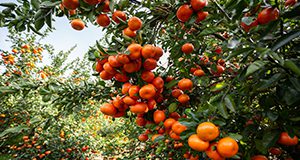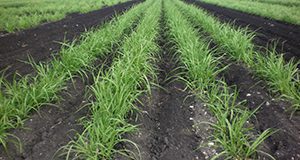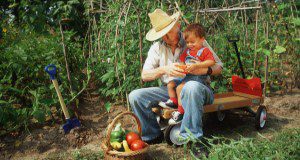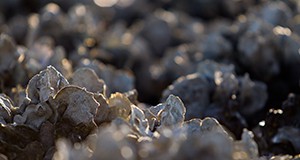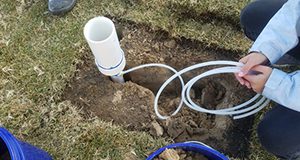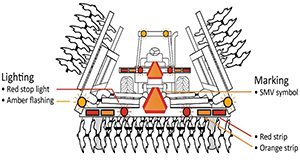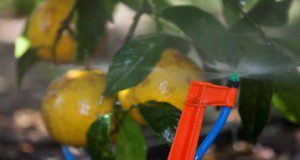This 14-page guide written by Lynn M. LeBeck and Norman C. Leppla and published by the UF/IFAS Entomology and Nematology Department provides assistance in selecting, purchasing and using commercially available natural enemies and biopesticides for managing accurately diagnosed pest problems.
https://edis.ifas.ufl.edu/in849
Utilizing Mindfulness as an Evening Reflection at Residential Camp
Utilizing mindfulness as an evening reflection at residential camps has been developed as a tool for use at the end of the day during residential camps, though language may be modified for use at the end of classes or day camps. The four lessons in this new 7-page publication of the UF/IFAS Florida 4-H Youth Development Program, written by Heather Janney, were developed as a way for youth to reflect on their activities throughout the day. It is recommended to do only one lesson 15-20 minutes per day.
https://edis.ifas.ufl.edu/4h412
Key Plant, Key Pests: Lilyturf (Liriope muscari)
This series of Key Plant, Key Pests publications is designed for Florida gardeners, horticulturalists, and landscape professionals to help identify common pests associated with common Florida flora. This new 4-page publication of the UF/IFAS Environmental Horticulture Department provides information and general management recommendations for leaf and crown rot, anthracnose, southern blight, scales, and root rot nematodes on lilyturf. Written by Juanita Popenoe, Caroline R. Warwick, and David J. Norman.
https://edis.ifas.ufl.edu/ep600
Construcción del Sistema de Tutorado para Lúpulo y su Establecimiento en Florida
El lúpulo (Humulus lupulus L.) es un ingrediente esencial en la elaboración de cerveza, que agrega amargura y sabor a la cerveza. Impulsada por el reciente movimiento de la cerveza artesanal, la producción de lúpulo se está expandiendo hacia estados no tradicionales en la producción de lúpulo. En Florida, aunque la producción comercial de lúpulo es casi inexistente, la cantidad de cervecerías artesanales aumentó de 45 en 2011 a 285 en 2018, y el impacto económico de la industria de la cerveza artesanal en Florida supera los $3 mil millones. Este nuevo artículo de 7 páginas, escrito por Shinsuke Agehara, Aleyda Acosta-Rangel, Zhanao Deng, Jack Rechcigl y Simon Bollin, traducido por Mariel Gallardo y publicado por el Horticultural Sciences Department de UF/IFAS, proporciona pautas y consideraciones para construir el sistema de tutorado para lúpulo y su establecimiento en Florida, utilizando como modelo, el campo de investigación del UF/IFAS Gulf Coast Research and Education Center (GCREC).
https://edis.ifas.ufl.edu/hs1408
Terminating Cover Crops Effectively for Weed Suppression
When utilizing cover crops for weed suppression, one important consideration is effective termination before planting the main crop. A major issue with improper termination is that the cover crop can become problematic and compete with the main crop, like other weeds. However, proper planning of the termination timing and method can minimize these issues and maximize the benefits of cover crop use. This 5-page publication discusses herbicide application, roller-crimper termination, tillage, and appropriate growth stages for termination. Written by Pratap Devkota, Michael J. Mulvaney, and David Wright, and published by the UF/IFAS Agronomy Department, February 2021.
https://edis.ifas.ufl.edu/ag449
Conducting the Needs Assessment #3: Educator Motivations, Barriers, and Objections
This third publication in the Conducting the Needs Assessment series outlines a range of motivations, barriers, and common objections Extension educators and other service providers may have pertaining to needs assessments. It is not an easy task to conduct a needs assessment, yet there are many motives for implementing one. This new 4-page publication of the Department of Agricultural Education and Communication discusses strategies for increasing educator motivation and removing barriers and objections to conducting a needs assessment. Written by Matt Benge.
https://edis.ifas.ufl.edu/wc386
Soil Arsenic in Miami-Dade County
This new 6-page factsheet provides information about soil arsenic (As) in Miami-Dade County, including basics, background concentrations, cleanup guidelines of soil As, and bioavailability of soil As related to plant and human health. Written by Yuncong Li, Ashley Smyth, Jonathan Crane, Christopher Teaf, and Guangliang Liu, and published by the UF/IFAS Department of Soil and Water Sciences.
https://edis.ifas.ufl.edu/ss696
The Plant-Growth-Promoting Fungus, Mortierella elongata: Its Biology, Ecological Distribution, and Growth-Promoting Activities
Recent studies show that Mortierella elongata can perform plant-growth promotion across different types of crops, including bahiagrass, corn, tomato, squash, and watermelon. Compared to the well-known species that have plant-growth-promotion abilities (e.g., mycorrhizal fungi, Trichoderma), growers, agents, and stakeholders are not familiar with “Mortierella” despite the important role these fungal taxa play in promoting the growth of their crops. This new 5-page publication of the UF/IFAS Department of Soil and Water Sciences provides a brief overview of Mortierella from biological, taxonomical, ecological, and functional perspectives to help readers learn the biology and potential modes of action of this fungus. Written by Hui-Ling Liao.
https://edis.ifas.ufl.edu/ss679
Common Questions When Using Soil Moisture Sensors for Citrus and Other Fruit Trees
This guide is for Extension personnel who may encounter questions from growers about the functioning and accuracy of soil moisture sensors (SMSs) for fruit tree production. The 4-page publication focuses on two types of handheld sensors currently used in Florida for irrigation management of citrus and other trees: the transmission line oscillator (TLO) and time-domain transmissometer (TDT). Written by Eric Herrera, Sandra M. Guzmán, and Eduart Murcia, and published by the UF/IFAS Department of Agricultural and Biological Engineering, February 2021.
https://edis.ifas.ufl.edu/ae551
Leading Difficult Conversations Series #3: Creating a Safe Conversation Environment
This publication series is intended for leaders who bear the responsibility of having difficult conversations as part of their professional responsibilities. Earlier in this publication series, the foundational principles of preparing for difficult conversations were established: (1) defining the issue and (2) determining your motive for the conversation. Once those principles are put into practice, the next phase of having a difficult conversation is creating a safe environment for the conversation. Components of creating a safe environment include recognizing a conversation’s content and conditions, understanding the threats to a safe environment, and utilizing skills to overcome threats to restore safety. This new 3-page publication of the UF/IFAS Department of Agricultural Education and Communication was written by Christy Chiarelli.
https://edis.ifas.ufl.edu/wc384
Abundance of Soil Insect Pests in Florida Sugarcane
This 6-page fact sheet written by Ron Cherry, Mabry McCray, Hardev Sandhu, and Michael Karounos and published by the UF/IFAS Entomology and Nematology Department is intended to inform sugarcane growers, scouts, pesticide applicators, and researchers about fluctuations of economically important sugarcane pests and implications for the management of those pests.
https://edis.ifas.ufl.edu/in1313
Insect Management for Onions, Leek, and Garlic
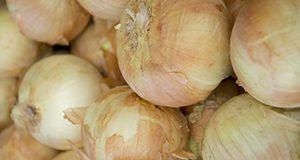
Sweet varieties of bulbing onions, which make bulbs under short day conditions and do not store well, are by far the most common onions grown in Florida. They are generally grown on small acreages in the winter for local and farmers markets. In Hillsborough County and in the Suwannee Valley, strawberry growers are the major producers of onions, many of which are harvested green. This 2-page fact sheet written by Xavier Martini and Susan Webb and published by the UF/IFAS Entomology and Nematology Department reviews the management of the two major onion pests in Florida: thrips and seedcorn maggot.
https://edis.ifas.ufl.edu/ig153
An Introduction to Utilizing Community Leaders to Expand Resiliency Efforts Following a Disaster
In the southeastern United States, many agricultural, vulnerable, and rural communities (AVRCs) must cope with natural disasters regularly. These natural disasters not only harm communities, crops, and livelihoods, but also can negatively impact the mental health of affected individuals, including those living in AVRCs. The purposes of this new 3-page article are to (1) provide tips on identifying specific individuals who could qualify as community leaders and (2) provide details on how partnering with community leaders can be beneficial for mental health communication and outreach. Written by Lisa Lundy, Jacqueline Aenlle, Ricky Telg, Tracy Irani, Angie Lindsey, Ashley Mcleod-Morin, Michaela Kandzer, and Phillip Stokes, and published by the UF/IFAS Department of Agricultural Education and Communication.
https://edis.ifas.ufl.edu/wc383
Oyster-Predator Dynamics and Climate Change
Oysters are one of the most important natural resources found in coastal and estuarine areas of Florida, but some Florida oyster populations appear to be declining. One possible driver of oyster population decline is increased mortality from oyster predators, including marine snails. But other environmental factors, such as changes in temperature or salinity, may also affect oysters. This 5-page fact sheet written by Gabrielle Love, Shirley Baker, and Edward V. Camp and published by the UF/IFAS School of Forest Resources and Conservation, Program in Fisheries and Aquatic Sciences describes how a changing climate may affect oysters directly but also indirectly by affecting their predators.
https://edis.ifas.ufl.edu/fa228
Design, Construction, and Installation of a Drainage Lysimeter for Use on Sandy, Well-Drained Soils under Turfgrass
Using lysimeters to collect water quality samples can provide a better understanding of nutrient or other solute migration below the surface, which can inform landscape management for environmental protection. This 6-page publication presents the materials, construction, installation, and management of a specific drainage lysimeter design in a step-by-step format. Written by Jovana Radovanovic, Eban Z. Bean, and Alexander J. Reisinger, and published by the UF/IFAS Department of Agricultural and Biological Engineering, February 2021.
https://edis.ifas.ufl.edu/ae554
Lighting and Marking of Agricultural Equipment on Highways: Summary of ASAE Standard S279.18
Agricultural vehicles on public roads can pose risks to their drivers and to drivers of other vehicles. Proper lighting and marking increase visibility of the farm equipment. This 6-page publication summarizes agricultural equipment lighting and marking standards. Written by Serap Gorucu, Charles Brown, and Carol Lehtola, and published by the UF/IFAS Department of Agricultural and Biological Engineering, revised February 2021.
https://edis.ifas.ufl.edu/ae175
Pollination of Cucurbita spp. (Squash and Pumpkin) Crops in Florida
Squash and pumpkin (Cucurbita spp.) are economically significant crops in Florida with over 7,900 acres in production and an estimated value of $35,412,000. Without insect pollination, however, crop yields for zucchini, crookneck, spaghetti, butternut and the rest of the large and delectable crew of squash and pumpkin species grown in Florida would be low to nonexistent. This 7-page fact sheet written by Rachel E. Mallinger and Oscar E. Liburd and published by the UF/IFAS Entomology and Nematology Department explains the pollination biology and requirements for squash and pumpkin, describes the signs and causes of poor pollination, and provides recommendations for improving pollination of these crops in Florida.
https://edis.ifas.ufl.edu/in1311
Galling Damage to Woody Ornamentals: Diagnosis and Potential Causes
Galling or witch's broom damage on the newly expanding buds and leaves of woody ornamental plants has become increasingly common. Diagnosing this damage can be difficult because the most common causes are obscure or occur well before damage symptoms appear. This 6-page fact sheet written by Adam Dale, Erin Harlow, Carrie Harmon, and Chris Marble and published by the UF/IFAS Entomology and Nematology Department is intended to help landscape managers, nursery growers, and pest control professionals diagnose characteristic galling damage, mitigate damage that occurs, and, when possible, prevent it from occurring.
https://edis.ifas.ufl.edu/in1310
Applications of Unmanned Aerial Systems in Agricultural Operation Management: Part III: Best Practices for Efficient Aerial Surveying
With the increasing use of unmanned aerial systems (UASs) in the agricultural domain, ensuring the consistency and completeness of aerial surveys is critical in order to establish repeatability and consistency in data collection activities. This publication covers five main steps to ensure that aerial data collections are repeatable and consistent among missions. It is one of a three-part series focusing on the applications, configuration, and best practices for using UASs in agricultural operations management. Written by Aditya Singh and James Fletcher, and published by the UF/IFAS Department of Agricultural and Biological Engineering, February 2021.
https://edis.ifas.ufl.edu/ae553
Nutrition and Irrigation Management for Florida HLB-Affected Trees
To improve production of huanglongbing (HLB) affected trees, nutrition, irrigation, and soil pH should be considered together, because each can influence the efficacy of the others in overcoming the effects of HLB on tree performance. This two-sided poster published by the UF/IFAS Horticultural Sciences Department through the UF/IFAS Citrus Research and Education Center was written by Tripti Vashisth, Davie Kadyampakeni, and Jamie D. Burrow.
https://edis.ifas.ufl.edu/hs1367
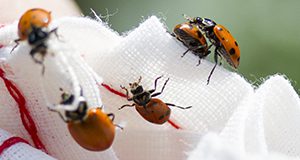
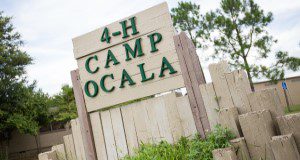
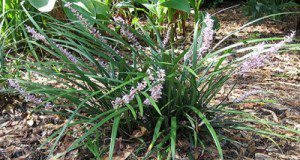

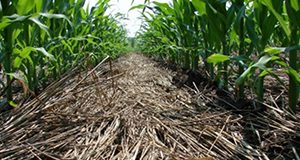


![Growth enhancement of loblolly pine (<i>Pinus taeda</i>) in response to inoculation of <i>M. elongata</i> (Isolate PMI93). After inoculation, seedlings of <i>P. taeda</i> were grown in sterile sand or natural soil systems (30% soil collected from <i>P. taeda</i> forest, Durham, NC, mixed with 70% sterile sand [w/w]) for 10 months. Credits: Hui-Ling Liao, UF/IFAS](https://edis-news.ifas.ufl.edu/wp-content/uploads/2021/03/ss679-300x160.jpg)
